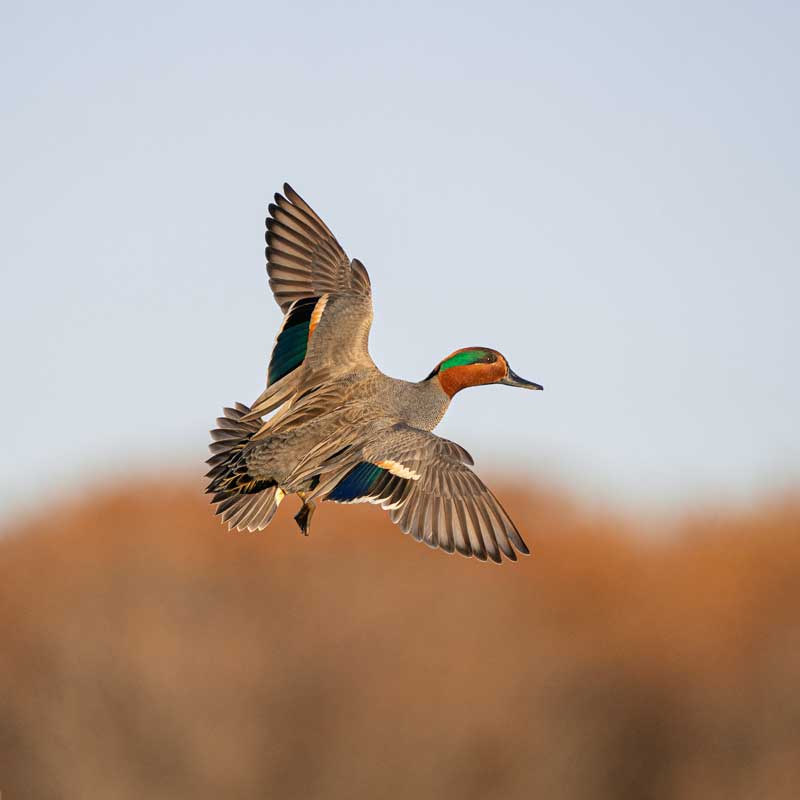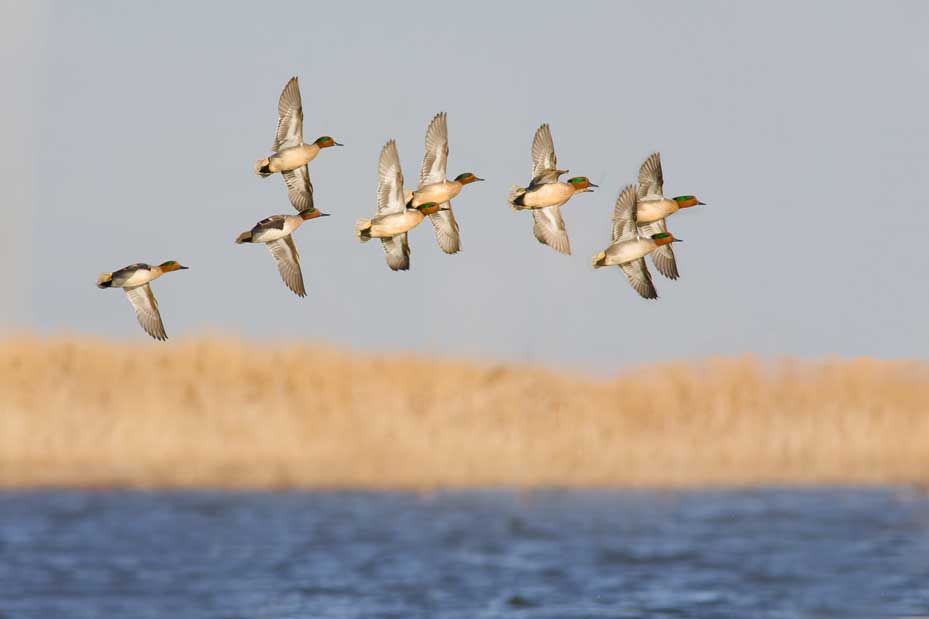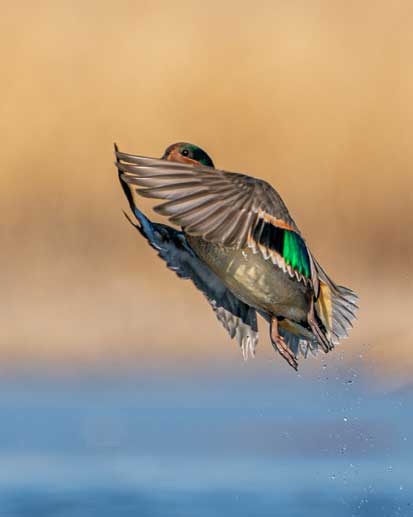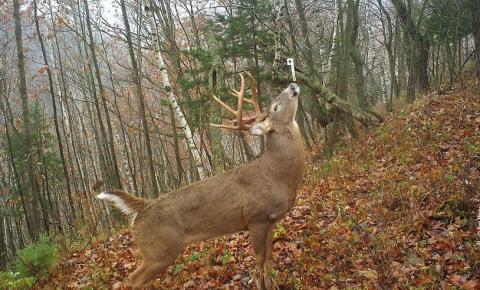Bob Humphrey
Puddle ducks or dabblers come in two size classes. There’s the medium to large versions like mallards, blacks, gadwall, wigeon and pintails that fly in a relatively uniform pattern, cup their wings, back-pedal then drop obligingly into the decoy spread. Then there’s the little ones, teal, that rocket in, twisting and turning, dodging this way and that, making for the most challenging and frustrating of wingshooting targets. There are several species with the most common and widespread being the green-winged.

WATCH: Lost Brake – Texas Teal
Green-winged teal (Anus crecca) belong to the same genus as their larger cousins and are one of three teal native to North America, the others being blue-winged and cinnamon. Their common name is derived from the iridescent feathers of their wing speculum. The genus Anas simply means, a duck. The species name, crecca, is believed to be a variation of the onomatopoeic Greek kreko, which is to cause a string to sound by striking, and may refer to the bird’s incessant calling.
Description
Green-winged males in breeding plumage are distinguished primarily by their chestnut head with an iridescent green eye-stripe, and vermiculated gray sides accented with a vertical white stripe. Females are typically drabber, resembling a miniature mallard hen. Unfortunately, many hunters miss out on bagging a beautiful male because teal are among the earliest migrants, and males are often still in eclipse plumage when they make their fall migration.
The female’s call is much like the quack of a hen mallard, but much higher-pitched. Males give a high-pitched whistle, similar to that of a pintail. Like most ducks, their wings also make a whistling sound in flight though you’re just as likely to hear the roar of wind under their wings caused by their rapid and erratic flight.
Like most dabblers, they prefer shallow water and can be found in a variety of habitats from shallow ponds and lake margins to coastal mashes and estuaries.
Average length: 14"
Average weight: 11 ounces
Wingspan: 22 inches

Breeding Range and Distribution
Green-winged teal breed across the North American continent from Alaska to the Canadian Maritime provinces, and south into central California and some of the northern mountain and plains states, with smaller breeding populations in the Great Lakes states and northern New England.
Migrating and Wintering
They migrate south in all four major flyways with heaviest flights coming from the prairie pothole region and migrating down the central flyway. Major wintering areas occur in the southeast, along the U.S. and Mexican Gulf Coast and in southern California.
Conservation and Hunting

Much of the information on duck numbers comes from the annual Waterfowl Breeding Population and Habitat Survey. The largest and longest running wildlife survey in the world, it's been in place since 1955, though it was suspended for two years during the pandemic. The 2022 WBPHS estimated green-winged teal at around 2 million. That is 32% below the 2019 estimate (the last time the survey was conducted) of 3.2 ± 0.2 million but similar to the long-term average.
This, hopefully short-term, decline was attributed largely to drought conditions in much of the Canadian prairies. Despite this, USFWS biologists did not deem it necessary to add additional restrictions on green-winged teal beyond the general harvest strategy.
According to the USGS Bird Banding Lab, the oldest green-winged teal on record was 20 years, 3 months. It was banded in Oklahoma as an adult in 1941 and shot in Missouri in 1960.































